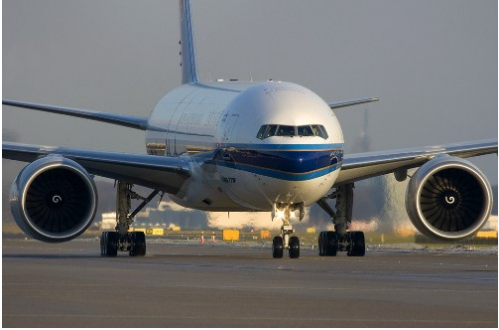Common Aircraft Types and Cargo Size Limitations for International Air Transportation
2024-01-26 17:41

Broadly speaking, passenger airplanes are divided into two types: wide-body and non-wide-body airplanes. Wide-body airplanes are also known as wide-body airplanes. Wide-body airplanes have at least two-aisle access and seat more than 200 people.
Common wide-body airplanes include Boeing 747 (B747-400F with a maximum cargo capacity of 112T, B747-8F with a maximum cargo capacity of 133T), 767 (B767-300F with a maximum capacity of 52T), 777 (B777F with a maximum cargo capacity of 102T), and Airbus A300 (A300-600F with a maximum capacity of 54T), 310, 330 (A330-200F with a maximum capacity of 54T). A330-200F up to 70T), 340 and MD-11;
Non-wide-body airplanes are also small airplanes with less than 200 seats and only a single aisle access, common narrow-body airplanes are A318 319 320 321, B707 717 727 737 (B737-300F, with the largest industrial load of 15T) 757 (B757-200F, with the largest industrial load of 25T).
For cargo carried by non-wide-body aircraft, the weight of each piece of cargo generally does not exceed 80 kilograms and the volume generally does not exceed 40 x 60 x 100 centimeters; for cargo carried by wide-body aircraft, the weight of each piece of cargo generally does not exceed 250 kilograms and the volume generally does not exceed 100 x 100 x 140 centimeters. For cargo exceeding the above weight and volume, the carrier may determine the maximum weight and volume of the cargo that can be received and transported based on the model of the aircraft and the conditions of the loading and unloading equipment at the airports of origin and destination.
Even for the largest aircraft type, the longest general cargo is not allowed to exceed 3.16 meters, and the highest cannot exceed 1.6 meters. Of course, in special circumstances the longest can reach 6 meters, but to apply, this 3.16 meters and 1.6 meters is the maximum size of aircraft cargo, general but also require a smaller size.
Limitations of international air cargo requirements there is such a provision, that is, if the gross weight to calculate the weight of less than 1 kilogram, the use of the rounding method of calculation.
International air transportation of special items such as:
1. Liquid, powder, chemicals, etc., to be issued by the Institute of Chemical Technology certificate.
2. International air transportation of dangerous goods need to issue a non-hazardous letter of guarantee, MSDS, UN, etc.;
3. Cargoes containing magnetic properties or capable of generating magnetic properties under certain conditions, e.g. containing engines, etc., will be required to do magnetic inspection.
4. Those exceeding the magnetic range required by airlines cannot be transported;
Written by Mario
